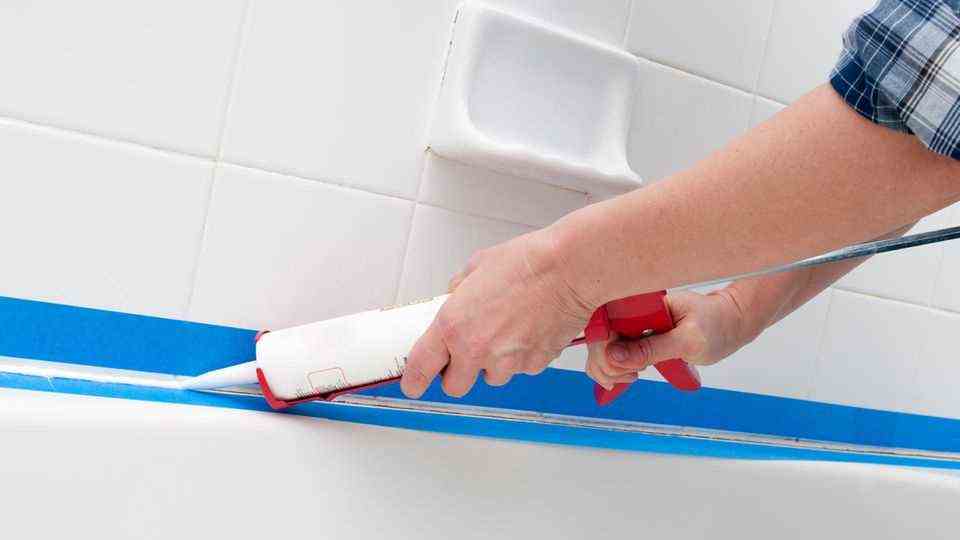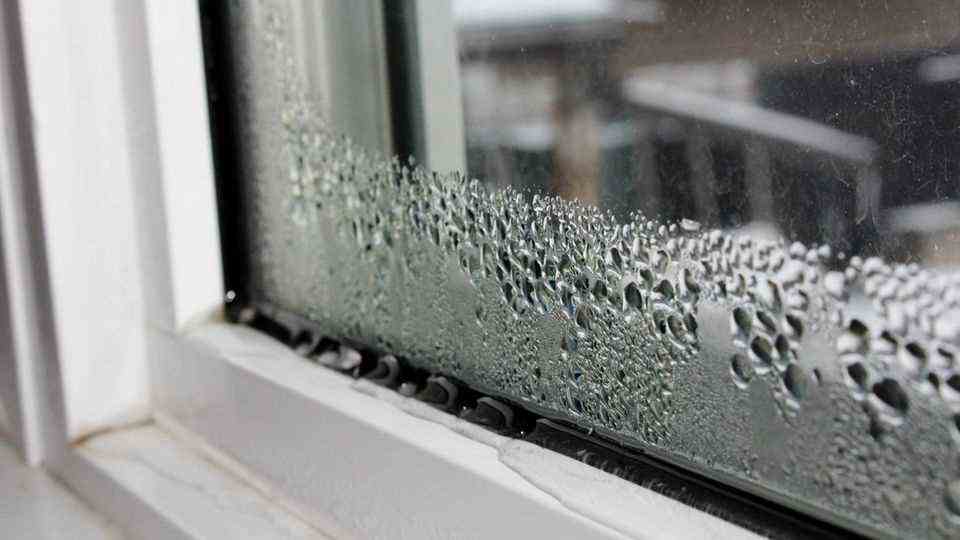Wet wet room
Removing mold in the bathroom: How to put an end to mushrooms
There is no other room where mold feels as good as in the bathroom
© nadisja / Getty Images
No household is safe from him: mold. The warm, humid climate in the bathroom in particular provides an ideal breeding ground for fungal spores. Once it has spread, it is difficult to remove. But it’s not impossible.
Mold in the bathroom is usually not harmful to your health, provided you do not have a weakened immune system or suffer from an allergy. The bad news is: that doesn’t make the fungal spores any nicer either. Quite the opposite – most people are downright disgusted by the black covering, which prefers to spread unhindered on the joints between the tiles. If you don’t do anything about it, you can assume that the mold will occupy the entire bathroom and give off a musty odor. In addition, large infested areas pose a risk to health. Either way, you cannot avoid removing the fungal spores and preventing a renewed infestation.
Take the first steps: This helps against mold
A tried and tested home remedy that can help out in many situations is vinegar. The advantage is clearly that you can fight the mold with it – but not the spores themselves. In plain language this means: You can remove a superficial infestation with diluted vinegar, but if it has already eaten into the silicone, you don’t have any Chance.
Can also be found in many households Denatured alcohol. This is a cheap version of drinking alcohol, which is not suitable for consumption – but for the (short-term) control of mold on all surfaces. It is best to apply the alcohol to the affected areas with a rag and work them until they fade. In the long term, however, the stains will return.
And also Hydrogen peroxide can be used to remove mold stains. The effect is the same as at a hairdresser: Apply the diluted solution (three percent is sufficient) to the affected joints and let it work for 30 minutes. The hydrogen peroxide ensures that the fungal spores die off and the spots are bleached.
If only chemistry helps: These agents are aggressive
Cleaning agents that contain chlorine have proven to be the best against mold in the bathroom. Since they are particularly aggressive against fungal spores, they are also extremely harmful to human health. Above all, the strong smell is a kind of warning signal that should convey to you not to inhale the vapors, as they are extremely irritating to the respiratory tract. Hence, you should get one cleaning agent containing chlorine Only use in well-ventilated rooms – then you can literally watch how the mold is combated effectively and over the long term.
!!Warning!! Never use this with other acidic cleaning agents, as highly toxic chlorine gas may be released!
Alternatively, you can also use detergents that contain the active ingredient benzalkonium chloride. You have to scrub the moldy areas much longer and harder, but you do not endanger your health – or the environment. And the best part is: the effect is at least as good if you’ve done everything right.
If silicone joints are so moldy that the spores have eaten their way into the material, the chemical club will no longer be of any use to you. Here you should remove the old silicone and make your joints new. It is recommended to use special Sanitary siliconethat contains fungicides and thus prevents a new infestation.

After the old silicone has been removed, the joints must be re-compacted
© mphillips007 / Getty Images
Mold-free alternative: this is why lime plaster makes sense
We have always been used to large parts of the bathroom walls being covered with tiles. But is that even necessary? The fact is that the small panels are easy to clean and water-repellent – but the joints are not. And that’s exactly why mold in the bathroom likes to spread on it. So why tile the entire walls for expensive money when there is enough space that does not get splashed with water. Here it is advisable to use lime plaster. It has the so-called blotter effect, which translates as: If a lot of water vapor is generated in the bathroom, for example when showering, the plaster absorbs the steam. As a result, less water automatically settles on the other surfaces, which significantly reduces the risk of mold. Apart from that, the plaster dries again very quickly, which is also a great advantage.
How to prevent mold in the bathroom
So that you don’t even have to worry about the best way to remove mold in the bathroom, you can take preventative measures, such as:
Ventilation Do it regularly: Since the warm and humid climate in the bathroom in particular paves the way for mold spores, you have to ventilate the room several times a day – especially after bathing or showering. Instead of just tilting the window, you should open it all the way for five to ten minutes, as this happens regularly Burst ventilation proven to be more effective and economical. Even if you do not shower one day, ventilation is essential, as the damp towels also distribute water vapor in the bathroom.
Keep the doors closed: in many households it is Bathroom door wide open after showering to quickly expel moisture from the room. That works, too, but it is spread across the rest of the apartment. If you are struggling with mold in one place or another (e.g. the windows), this variant is definitely not a good choice. So better keep the door closed while you ventilate the bathroom.
Heat in the bathroom: Since the moist air condenses particularly quickly in cold places, the room should be heated continuously, especially in autumn and winter. This does not mean that you should set the radiator to the highest level, but rather that in the bathroom always between 21 and 23 degrees Celsius should prevail. Because warm air can absorb moisture better – but only if it can reach all areas. For this reason, the radiators should always stand free.
Spread the Shower curtain Off: Many people have the habit of drawing the curtain after showering – this means that it can only dry very slowly and is a perfect breeding ground for mold. To ensure that the spores do not adhere to it, the curtain should always be spread out until it has dried. In addition, most models are machine washable these days, so you can thoroughly clean the material every now and then. here find suitable models.
dry The walls: Since the mold in the bathroom primarily spreads between the tiles, more precisely on the joints, you should peel off the walls after showering – this will dry the tiles faster and less moisture will collect on the joints. Even if that may seem annoying, the process takes a long time with one Shower squeegee less than five minutes. You always have too much time.
This will make your wet windows dry faster On cold winter days, condensation increasingly collects on the window © Akchamczuk / Getty Images
When the temperatures drop, more condensation builds up on the window in the bathroom (and sometimes in other rooms as well). This is primarily due to the fact that it is very warm inside and very cold outside. If you are tired of wiping the glass dry with a towel every morning, you can use a window vacuum (e.g. from the Kärcher company) – with the suction nozzles you can easily draw the water from each window, and you can also use the device to clean the windows if you use the spray bottle with the microfiber cover.
You might also be interested in:
This article contains so-called affiliate links. Further information are available here.

